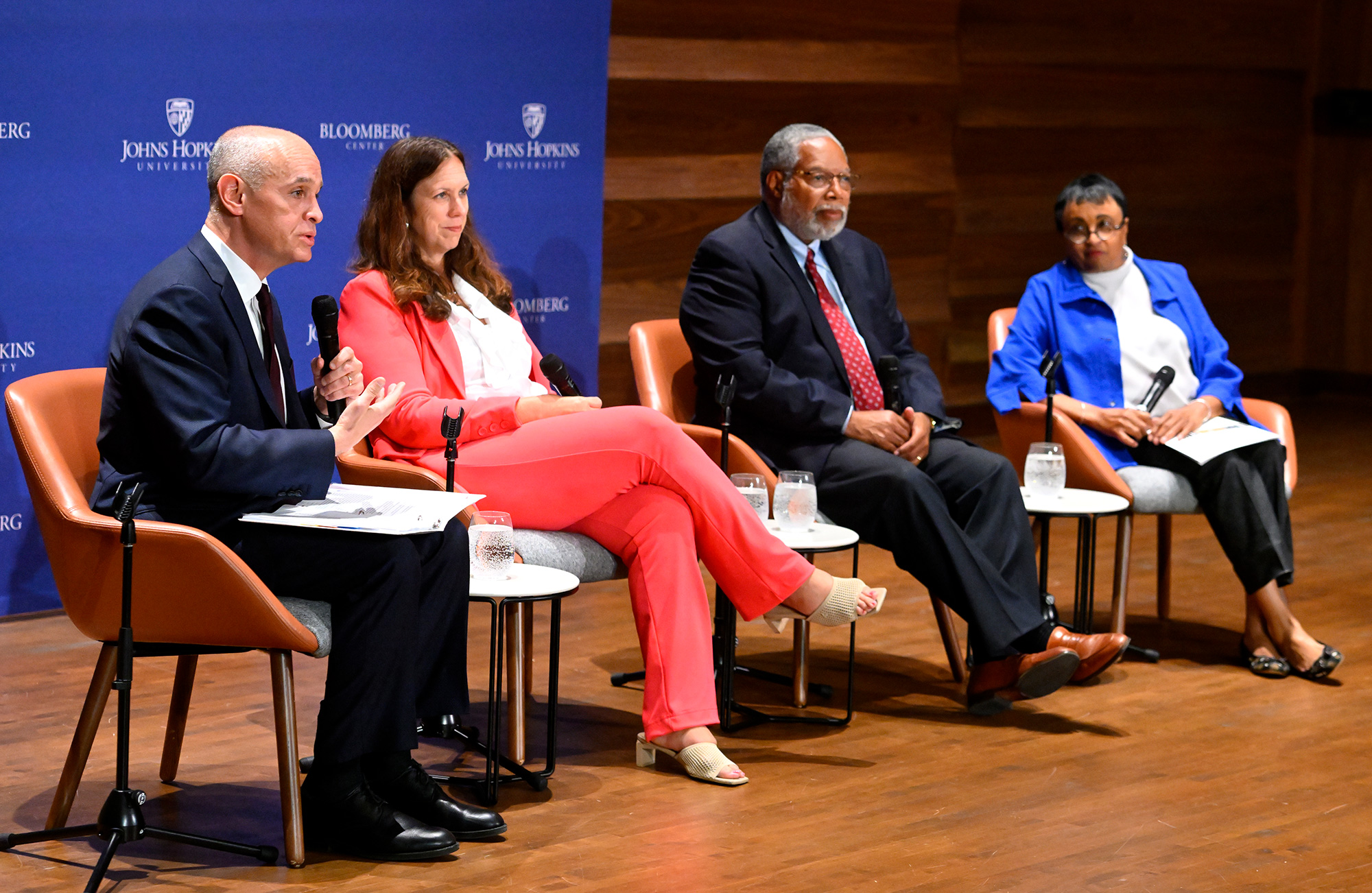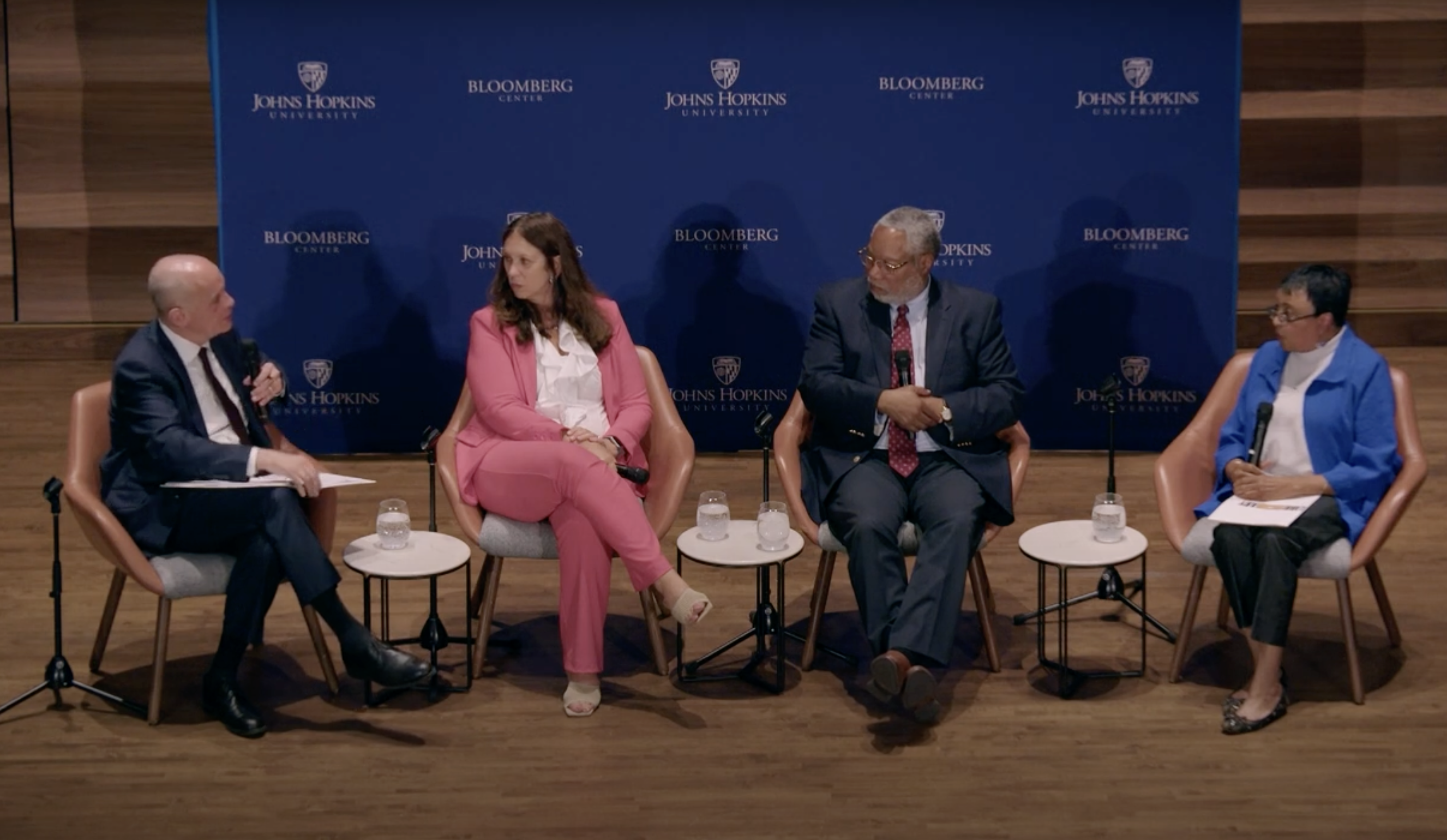How our cultural institutions help to safeguard democracy
Johns Hopkins hosts pioneering panel on democracy and shared cultural heritage featuring heads of Smithsonian, Library of Congress, and National Archives

- Image Will Kirk
Johns Hopkins University recently brought together some of the nation’s most prominent leaders in cultural heritage to discuss the pivotal role of museums, libraries, and archives in fortifying civil society.
The event, titled “Democracy and Our Shared Heritage,” featured a distinguished panel including Lonnie G. Bunch III, secretary of the Smithsonian Institution; Librarian of Congress Carla Hayden, and Colleen Shogan, archivist of the United States. The discussion, moderated by Christopher S. Celenza, dean of the university’s Krieger School of Arts and Sciences, took place at the Hopkins Bloomberg Center.

Democracy and our shared heritage
A conversation with Secretary of the Smithsonian Institution Lonnie G. Bunch III, Librarian of Congress Carla Hayden, and Archivist of the United States Colleen Shogan.
The evening panel emphasized the importance of collaboration among these key institutions in preserving and promoting democratic values. Museums, libraries, and archives serve as guardians of shared heritage and provide vital spaces for public engagement and dialogue, the panelists said. These institutions play a crucial role in safeguarding history and informing and enriching the citizenry about the United States and the world.
“Cultural institutions are trusted sources,” Bunch said. “At a time when a nation is in crisis, which seems to happen every decade, it’s crucially important to have places that you can dip into for trust, candor, and honesty, but it also means that these institutions have to have the courage to do that.”
Bunch, Hayden, and Shogan also shared insights on how their respective institutions contribute to the democratic process by making knowledge and heritage accessible to all using new technologies such as artificial intelligence.
“With technology, we are on the precipice of an amazing transformation at cultural institutions,” Shogan said. “We are just starting to harness the power of what we will be able to do.”
Bunch echoed that sentiment.
“The challenge for us is to recognize that we need to be comfortable with new technologies,” he said. “The future for places like the Smithsonian is to recognize that it doesn’t have broad enough shoulders to do everything. It’s made better by effective collaboration.”
For Hayden, collaboration goes beyond what she called the “new gang of three,” referring to ongoing work being done between the Library of Congress, Smithsonian, and National Archives, all the way down to state, local, and regional levels.
“They look to you as setting standards and all types of things,” she said.
The event was hosted by JHU’s MA in Museum Studies and MA in Cultural Heritage Management programs, both part of its Advanced Academic Programs division, and received support via the university’s Nexus Awards initiative.